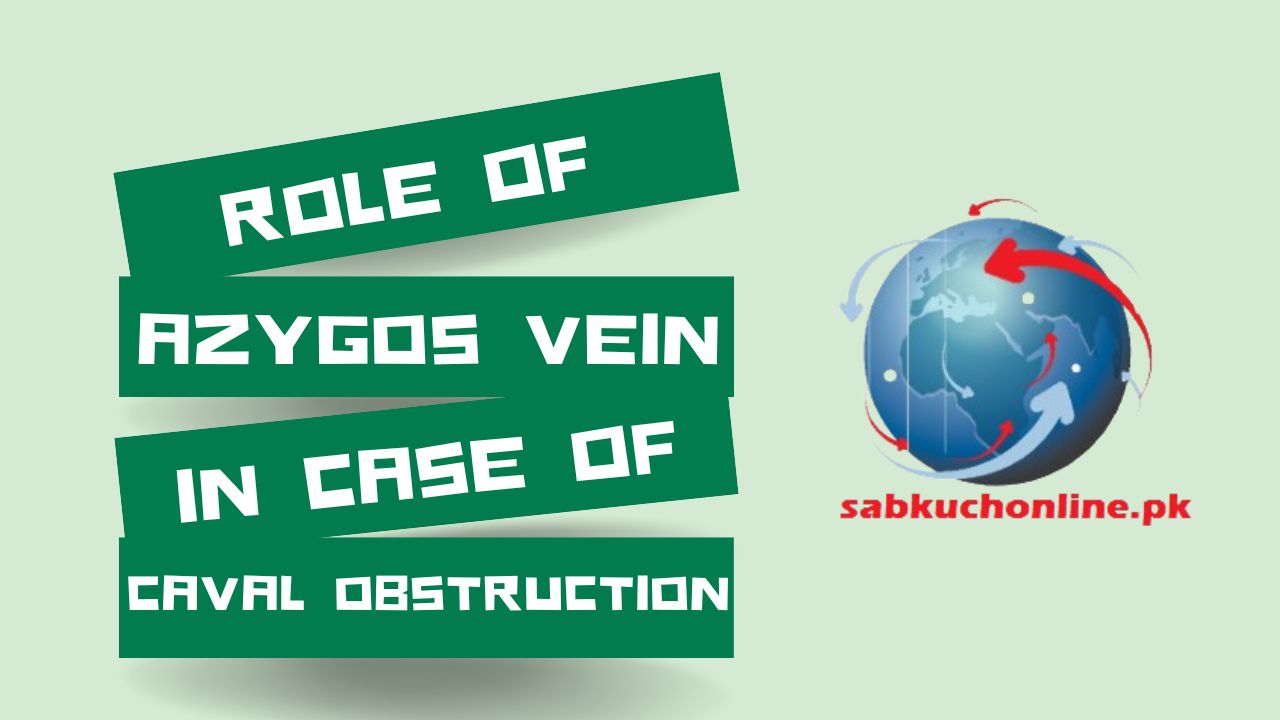The azygos vein plays a crucial role in cases of superior vena cava (SVC) obstruction, offering an alternative route for venous blood to return to the heart when the normal flow through the superior vena cava is compromised. SVC obstruction can occur due to various conditions, such as tumors, thrombosis, or external compression. The azygos vein, along with its tributaries, becomes an important collateral pathway for maintaining venous return from the upper part of the body to the right atrium of the heart.
Role of Azygos Vein in SVC Obstruction:
- Collateral Circulation:
- The azygos vein serves as a major collateral pathway when there is obstruction or compression of the SVC.
- Blood that would normally flow through the SVC is redirected through the azygos system as an alternative route.
- Drainage from Posterior Intercostal Spaces:
- The azygos vein receives blood from the right posterior intercostal veins, which drain the posterior part of the thoracic wall.
- This drainage is crucial in maintaining venous return from the posterior aspects of the thorax.
- Drainage from Esophageal and Bronchial Veins:
- The azygos vein also receives blood from esophageal veins and right bronchial veins.
- This drainage is important for redirecting blood from the esophagus and bronchi when the normal pathway through the SVC is compromised.
- Formation of Azygos System:
- In the context of SVC obstruction, the azygos system, which includes the azygos vein, hemiazygos vein, and accessory hemiazygos vein, becomes engorged as it accommodates the increased blood flow.
- Redirection to the Inferior Vena Cava:
- Ultimately, the blood from the azygos system is directed into the inferior vena cava, allowing it to return to the right atrium of the heart.
Clinical Significance:
- Venous Distension:
- SVC obstruction can lead to venous distension and engorgement of the azygos system, visible on imaging studies.
- Collateral Circulation Assessment:
- The prominence and dilatation of the azygos vein and its tributaries can be used as indicators of SVC obstruction on imaging studies such as chest X-rays, CT scans, or MRI.
- Symptom Management:
- Understanding the collateral circulation through the azygos system is essential for managing symptoms related to SVC obstruction, such as facial and upper extremity swelling.
- Diagnostic Imaging:
- Radiological assessment of the azygos system can be a valuable diagnostic tool in identifying the presence and extent of SVC obstruction.
In summary, the azygos vein plays a compensatory role in maintaining venous return in the presence of SVC obstruction. Its ability to provide an alternative route for blood drainage from the upper body is crucial for preventing venous stasis and ensuring adequate circulation. Recognition of the azygos system’s importance is vital in both diagnosing and managing conditions associated with SVC obstruction.
